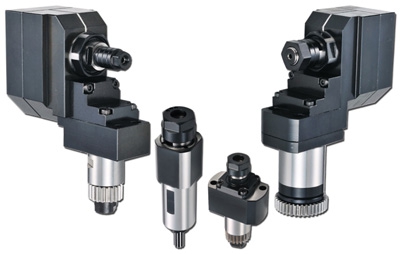
Koma Precision Inc. is a distributor for live and static tools for Swiss-style machines for Citizen-Cincom, Ganesh, Hanwha, Nexturn, Star, Tornos and Tsugami machines. Designed and manufactured to the OEM specifications, these new live tools feature heavy-duty housings for increased rigidity and greater stability. The milling and drilling units incorporate high-grade bearings for increased accuracy and longer spindle life. Also available are thread whirling and slotting units and sleeve, air tool, and drill holders. All of the units are simple to install and are direct replacements that require no modifications to the gang block.
"Koma Precision Inc. shares a commitment to providing quality products that maximize the performance of machine centers," stated John Arnestad, tooling product manager, Koma Precision. "Koma's expert staff draws upon years of experience to help you choose the best swiss tools for your job. The better you are at choosing the right tools, the more efficient your process becomes."
Contact Details
Related Glossary Terms
- centers
centers
Cone-shaped pins that support a workpiece by one or two ends during machining. The centers fit into holes drilled in the workpiece ends. Centers that turn with the workpiece are called “live” centers; those that do not are called “dead” centers.
- gang cutting ( milling)
gang cutting ( milling)
Machining with several cutters mounted on a single arbor, generally for simultaneous cutting.
- milling
milling
Machining operation in which metal or other material is removed by applying power to a rotating cutter. In vertical milling, the cutting tool is mounted vertically on the spindle. In horizontal milling, the cutting tool is mounted horizontally, either directly on the spindle or on an arbor. Horizontal milling is further broken down into conventional milling, where the cutter rotates opposite the direction of feed, or “up” into the workpiece; and climb milling, where the cutter rotates in the direction of feed, or “down” into the workpiece. Milling operations include plane or surface milling, endmilling, facemilling, angle milling, form milling and profiling.
- slotting
slotting
Machining, normally milling, that creates slots, grooves and similar recesses in workpieces, including T-slots and dovetails.







